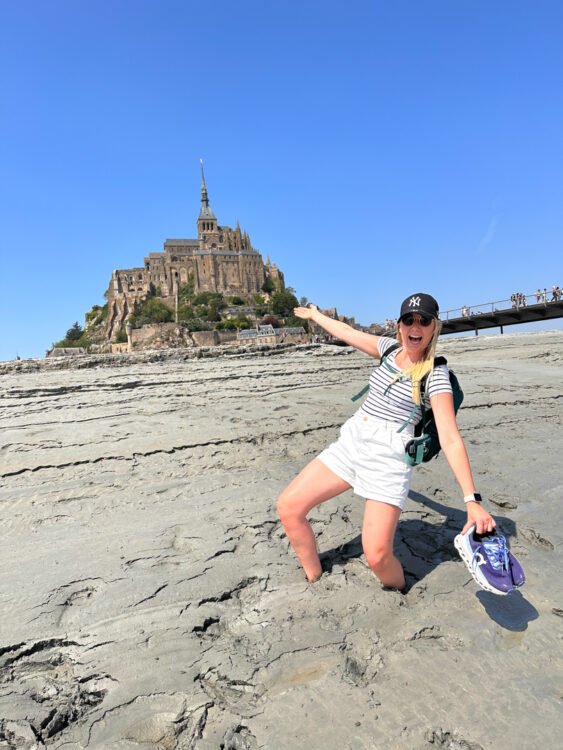
When I first saw a picture of Mont Saint-Michel, I thought, “WOW, what a really cool castle in the water! I need to go there!”
I checked Google Maps, and it was quite close to Luxembourg, just 7 hours by car.
After that, my French colleague told me that Mont Saint-Michel is actually an abbey, not a castle. So I dug deeper and discovered that the Bishop of Avranches founded the abbey at Mont Saint-Michel in 708 AD after claiming that the Archangel Michael instructed him in a vision to build a church on the island! Quite a unique story, isn’t it?
But despite its appearance reminiscent of a Disney castle, this abbey had much more to offer. The surrounding nature is truly unique. During high tide, the water rushes in as fast as galloping horses, surrounding the abbey and making it look like a castle floating on water! The dangerous quicksands also sparked my curiosity to visit.
Yes! That’s incredible!
And that was why we decided to stop there on our trip through Normandy: to see the beauty of Mont Saint-Michel and challenge ourselves by walking barefoot through quicksand, which can be dangerous.
Table of Contents
What is Mont Saint-Michel?
Along with its bay, Mont Saint-Michel is one of France’s most beautiful sights. It is located in northern France, a small, rocky island about 1 kilometer off the coast of Normandy.
For hundreds of years, this magical island with an abbey on top was a central stop for European pilgrims. Today, Mont Saint-Michel is one of France’s most popular tourist destinations, attracting over 3 million visitors each year.
Not only does the stunning architecture stand out, but the surrounding nature makes the place one of the most unique landscapes in the world. The tides here are the highest in continental Europe, with a difference of up to fifteen meters between low and high tide. The bay is also home to deadly quicksands that have claimed lives in the past.
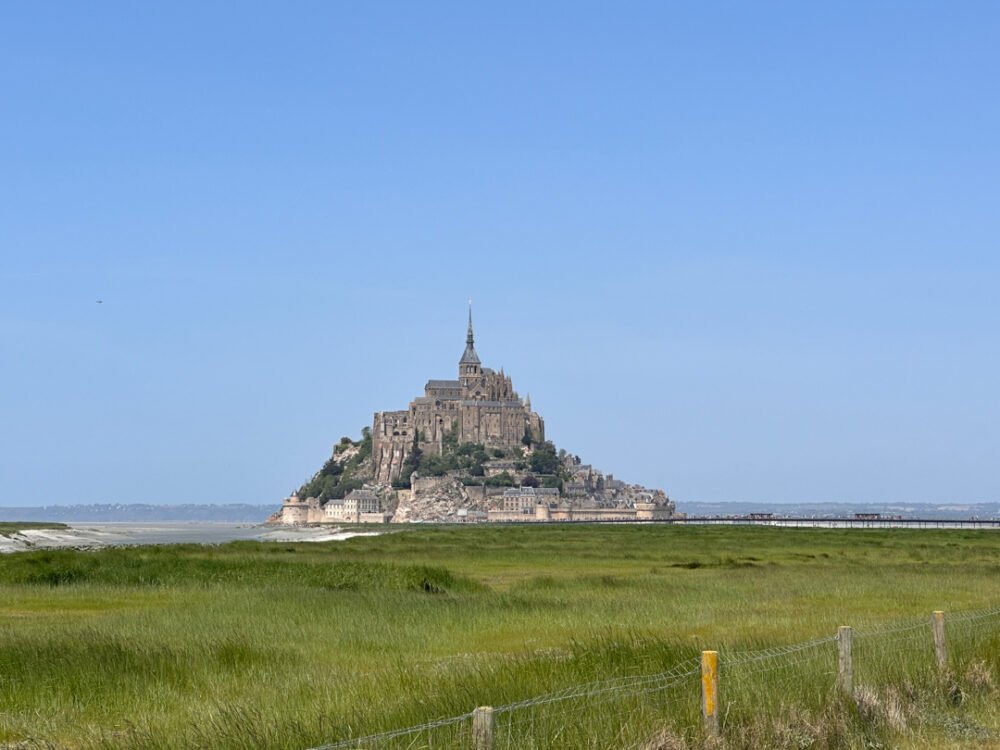
Can You Visit Mont Saint-Michel at High Tide?
At high tide, you cannot cross Mont Saint-Michel Bay on foot or with a shuttle bus, but you can watch the water rush in from the island, mainland, or bridge. As the tide rises, Mont Saint-Michel becomes an island surrounded by water. Though it looks stunning, you won’t be able to access the abbey until low tide.
The tides around Mont Saint-Michel are some of the highest in Europe, with a difference of up to 15 meters between low and high tide. These fast tide changes are often called “a tide as fast as a galloping horse.”

Can You Cross the Quicksands Alone?
When the tide is low, yes—just take off your shoes!
With the motto “No risk, no fun,” my boyfriend and I went ahead and did it! It was an incredible, once-in-a-lifetime experience that we will never forget.
However, I wouldn’t recommend it for young children or the elderly. Make sure to check the tide schedule and, if possible, book a guide to show you the safe areas to cross the quicksands. So while you can cross the quicksands alone, it’s highly discouraged due to the dangers involved.
Don’t worry, though! There is a bridge to the abbey that you can safely cross if you’d rather avoid the quicksands.

How to Get to Mont Saint-Michel?
From Luxembourg, we took a road trip to Brudge in Belgium, Etretat in Normandy, and our last stop was Mont Saint-Michel.
From Paris by car is around 4 hours, but you can also get a train. Here is where you can buy the train ticket for just €29.
The car park is located 2.5 km from the entrance of Mont Saint-Michel, and it costs 25 euros. From there, you have two options to get to the abbey: either walk the entire distance or take a bus. The dedicated shuttle bus called “Le Passeur” transports visitors approximately every 15 minutes, and it takes around 12 minutes.
For us, the choice was obvious! Thanks to the lovely weather and clear blue sky, we enjoyed a leisurely stroll to Mont Saint-Michel.
It took us about an hour to walk there. We could have gone faster if we had not stopped so often to capture beautiful images; the closer we got, the more amazed we were by the scenery.
Then we had to take off our shoes and socks and cross the water and quicksand.
Our legs and feet were covered in wet sand, so we had to wash them thoroughly. Luckily, the abbey provides water for handwashing upon arrival, so we took advantage of it to wash our legs. 🙂
On the way back, we used the bridge to not get dirty again.

The Weather, Tides, and Best Time to Visit
There are two things that can greatly affect your experience at Mont St. Michel: the weather and the tides.
We visited in May 2023 with picture-perfect weather and low tide. So the best time to visit Mont Saint-Michel is in the spring months, April-May. Going there on a cloudy or chilly day will result in extremely low visibility, making it impossible to see the abbey from a distance.
If you plan on visiting during the sunny days, bring water and a hat to shield your head from the sun. The one-hour walk we did in the pure afternoon sun was hitting us strongly, and there was no shadow to hide and rest.
It might be challenging to see the abbey during high tide, so checking the tide schedule is another important requirement to find out when the tide will be at Mont Saint-Michel.
How Much Time Do You Need at Mont Saint-Michel?
We spent about four hours there, which was enough time to see the main sights. Generally, you’ll need between 4 and 7 hours to visit Mont Saint-Michel. This gives you time to explore the ramparts, main streets, and the stunning abbey.
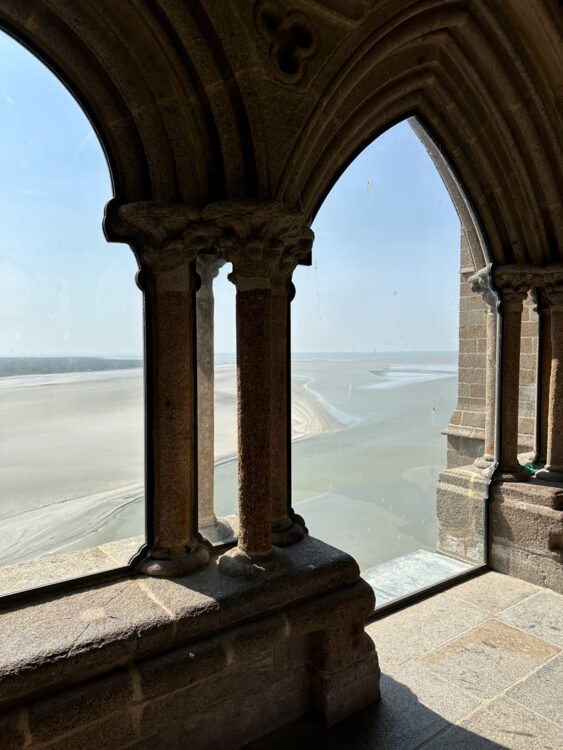
Do You Need a Ticket for Mont Saint-Michel?
Access to the village of Mont Saint-Michel (main street, ramparts, alleys, gardens) is free and open 24 hours a day. However, if you want to enter the abbey church, you’ll need a ticket, which costs €13 for adults.
Are Pets Allowed in Mont Saint-Michel?
Yes, you can bring your pet to Mont Saint-Michel, but only in the village. Dogs on leashes are welcome to explore the streets and ramparts. However, pets are not allowed inside the parish church or abbey (except guide dogs).
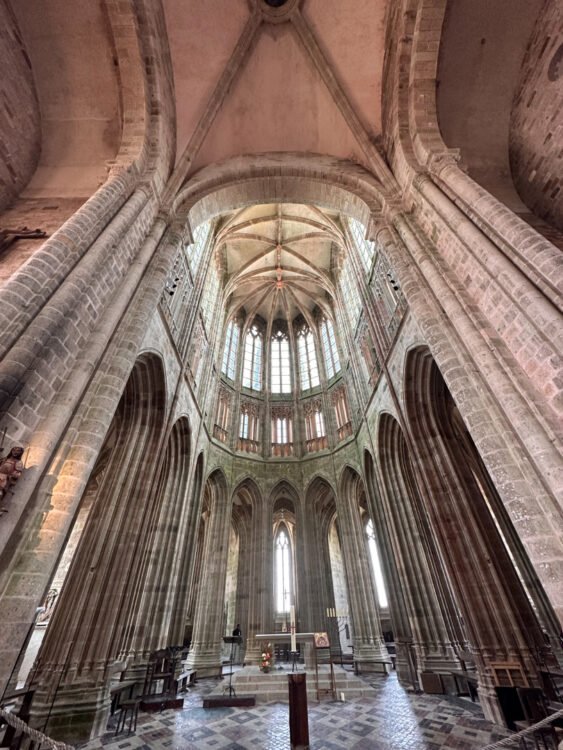
Does Anyone Live There?
Yes! There are currently about 30 permanent residents on Mont Saint-Michel, though the island used to house over 1,200 people. Most residents today are Benedictine monks and nuns who live in the abbey, focusing on prayer and religious life. A small number of residents also work in tourist businesses, restaurants, and hotels.
What to Do After Visiting Mont Saint-Michel?
Claude Monet fell in love with the cliffs and painted them over ninety times. The striking contrast between the white cliffs and the blue ocean is unforgettable.
Mont Saint-Michel is an extraordinary destination, and the combination of history, nature, and adventure makes it a must-see on any trip through Normandy.




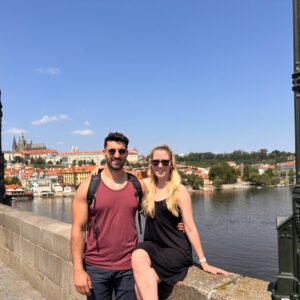
Leave a Reply